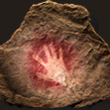Monday, 24 December 2012
What does it mean to be human?
 The web site What does it mean to be human? was developed by the Smithsonian National Museum of Natural History in Washington D.C.. Dedicated to the dissemination of knowledge on the evolution of the human species, this site, with its graphics evoking the African savanna, the cradle of humanity, addresses myriad questions that will arouse the curiosity of a wide audience—questions such as:
The web site What does it mean to be human? was developed by the Smithsonian National Museum of Natural History in Washington D.C.. Dedicated to the dissemination of knowledge on the evolution of the human species, this site, with its graphics evoking the African savanna, the cradle of humanity, addresses myriad questions that will arouse the curiosity of a wide audience—questions such as:
How do evolution and Darwinian natural selection work?
What is the relationship between humans and the species of apes alive today?
Did humans evolve in a straight line, one species after another?
How can scientists estimate the age of a fossil, or the climate conditions a million years ago?
Is the concept of evolution compatible with religion?
This site offers an excellent introductory video in which paleoanthropologist Rick Potts uses artifacts and fossil skulls to sketch a portrait of 4 million years of hominization in about 4 minutes. This site also contains many other sections addressing numerous facets of human evolutionary history, starting with the evolution of the traits that are specific to humans beings, including physical traits such as standing upright and symbolic traits, such as using language.
This site explores the evidence of evolution through traces of human behaviour that include stone tools and other artifacts, footprints, hearths and shelters, clothing, jewellery, burial sites, and rock paintings, all illustrated with very high quality photographs accompanied by the relevant archeological data, such as date and place of discovery and estimated age.
The site also features two intriguing interactive interfaces. One lets you accompany a team of archeologists as they explore an excavation site in Kenya. The other is a timeline, an indispensable tool to orient yourself on a time scale that is so remote from our personal experience that it often keeps us from understanding how we are both a species of animal like any other and a strange social creature endowed with language and capable of creating tools for tasks as diverse as butchering a carcass or creating a web site.
![]() What does it mean to be human?
What does it mean to be human?
![]() Introduction to Human Evolution
Introduction to Human Evolution
![]() Adventures in the Rift Valley: Interactive
Adventures in the Rift Valley: Interactive
![]() Human Evolution Timeline Interactive
Human Evolution Timeline Interactive
Evolution and the Brain | Comments Closed







